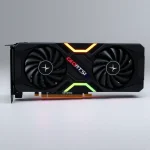Death Stranding 2 beach features unique PS5 power saver mode

Death Stranding 2: On the Beach has introduced a fascinating implementation of the PlayStation 5's power saver mode, a feature that has garnered attention for its innovative use. This new mode is not just a simple adjustment; it represents a significant step in how developers are approaching performance optimization in gaming.
In the latest analysis by the tech experts at Digital Foundry, the mechanics behind how both Death Stranding entries utilize this power saver mode have been thoroughly examined. This mode, introduced in a recent PS5 system update, aims to reduce power consumption by cutting CPU resources in half, halving memory bandwidth, and lowering both CPU and GPU clock speeds. Such adjustments are crucial for extending the lifespan of the console and providing environmentally friendly gaming options.
Understanding Power Saver Mode in Gaming
The Power Saver Mode is designed to balance performance and energy efficiency. With gaming consoles becoming more powerful, managing their energy consumption is essential. This mode allows players to enjoy a high-quality gaming experience while being mindful of power usage.
Key features of the Power Saver Mode include:
- Resource Allocation: The mode reduces CPU and GPU clock speeds, allowing for more efficient use of power.
- Dynamic Resolution Scaling: Games can adjust their resolution on the fly, ensuring smooth gameplay without sacrificing visual fidelity.
- Performance Metrics Monitoring: Players can track performance and power usage to optimize their gaming experience.
How Death Stranding 2 Implements Power Saver Mode
In contrast to the previous title in the series, the implementation of Power Saver Mode in Death Stranding 2: On the Beach takes a more nuanced approach. While the Director's Cut had a relatively straightforward integration due to its origins as a PS4 title, this sequel pushes the envelope with more complex gameplay mechanics and visual fidelity.
According to Digital Foundry, the game operates primarily in Performance Mode while capping the frame rate at 30 FPS when Power Saver Mode is activated. This is particularly interesting as it represents a balancing act between visual quality and performance.
- Tessellation and Geometry: These aspects remain consistent with the Quality Mode, showcasing the developers' commitment to maintaining aesthetic standards even in a power-saving environment.
- Resolution: The game runs at a dynamic resolution of 1440p, ensuring that players experience high-quality visuals without overwhelming the system's resources.
- Performance Trade-offs: Players might notice a reduction in frame rates, but the trade-off is often worth it for the enhanced graphical fidelity present in many scenes.
Why Focus on Power Saver Mode?
The question remains: why invest so much effort into supporting a mode that may not see widespread usage? Digital Foundry suggests that this implementation could be a strategic move, preparing developers for the anticipated flexibility required for future gaming innovations.
While the current Power Saver Mode may not be a preview of the potential capabilities of a new PlayStation handheld device, it does provide valuable insights into the direction of game development. By experimenting with performance optimization strategies, developers are laying the groundwork for future titles that can effectively balance power consumption with high-performance gaming.
Current Games Utilizing Power Saver Mode
Death Stranding 2: On the Beach is not alone in adopting this innovative mode. Other titles, such as the Demon's Souls Remake by Bluepoint Games, have also integrated Power Saver Mode. This trend is indicative of a broader movement within the gaming industry to prioritize sustainability while enhancing user experience.
Games currently implementing Power Saver Mode include:
- The Last of Us Part I
- Demon's Souls Remake
- Marvel's Spider-Man: Miles Morales
Future Implications of Power Saver Mode
As developers continue to explore the capabilities of Power Saver Mode, the implications for future gaming consoles and handheld devices could be profound. The expectation is that upcoming hardware will require similar flexibility and optimization features to balance performance and energy efficiency.
For example, a rumored PlayStation handheld may target a much lower power consumption range (between 15 to 25W), making the current 115W target for console gameplay unsustainable. Therefore, the groundwork being laid today will be crucial for future developments.
To further appreciate these advancements, check out this insightful video on Death Stranding 2 and its implementation of Power Saver Mode:
Conclusion
As the gaming industry evolves, features like Power Saver Mode are becoming increasingly essential. Death Stranding 2: On the Beach exemplifies how developers can innovate within these constraints, offering players both a thrilling gaming experience and a commitment to energy efficiency.
For those interested in deeper technical analyses and updates on gaming features, be sure to follow Wccftech on Google or add us to your preferred sources.




Leave a Reply